How a group of activists are stopping a new copper mine in Northern Norway
Let the fjord live!
A photo story
By Mohsen Anvaari
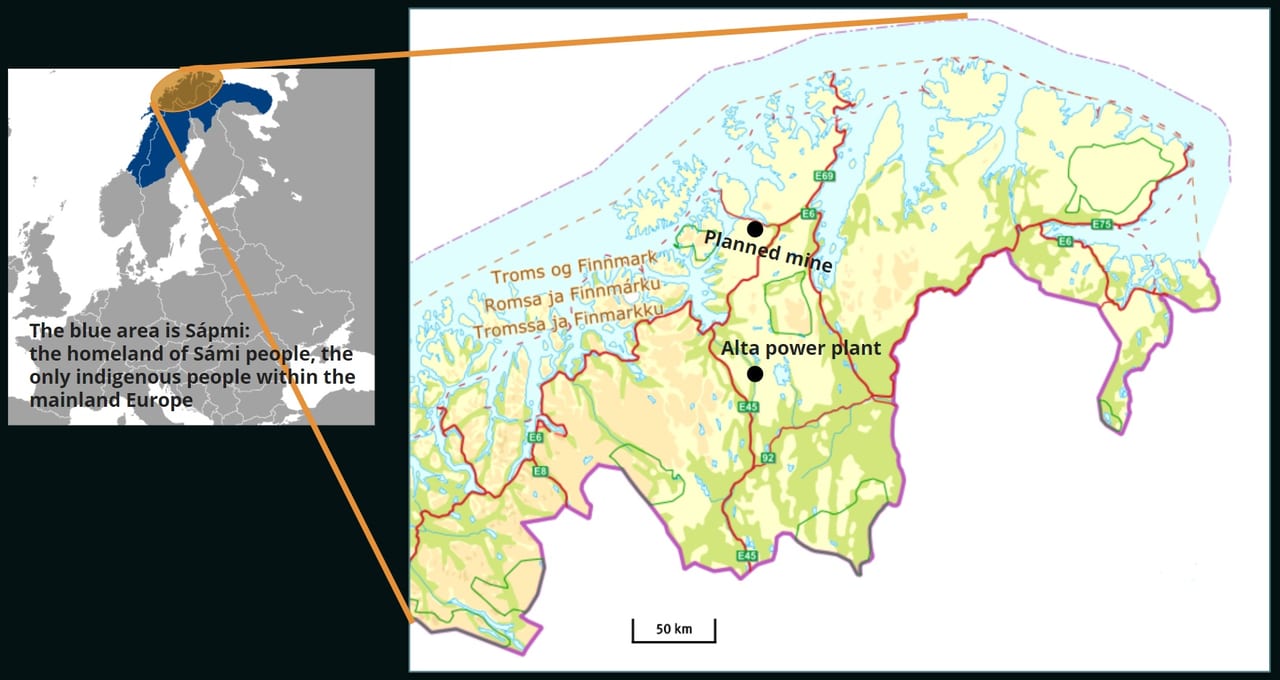
Finnmark area in the north of Norway, which is a part of the indigenous land of Sápmi, has been the scene of long struggles in the modern time: between development ideology and extraction nexus on one hand, and self determination and culture and nature conservation on the other hand. Alta conflict in 70s and 80s is a highlight point in this history where Norwegian government constructed a hydroelectric power plant in Alta-Kautokeino river; Sámi people and environmental activists joined together for the first time and protested for a long time, the slogan was "let the river live". At one point ten percent of all Norwegian police officers were stationed in Alta, the protesters were forcibly removed by them. At the end the power plant was constructed but the protest affected the political climate afterwards and has become a symbol of resistance.
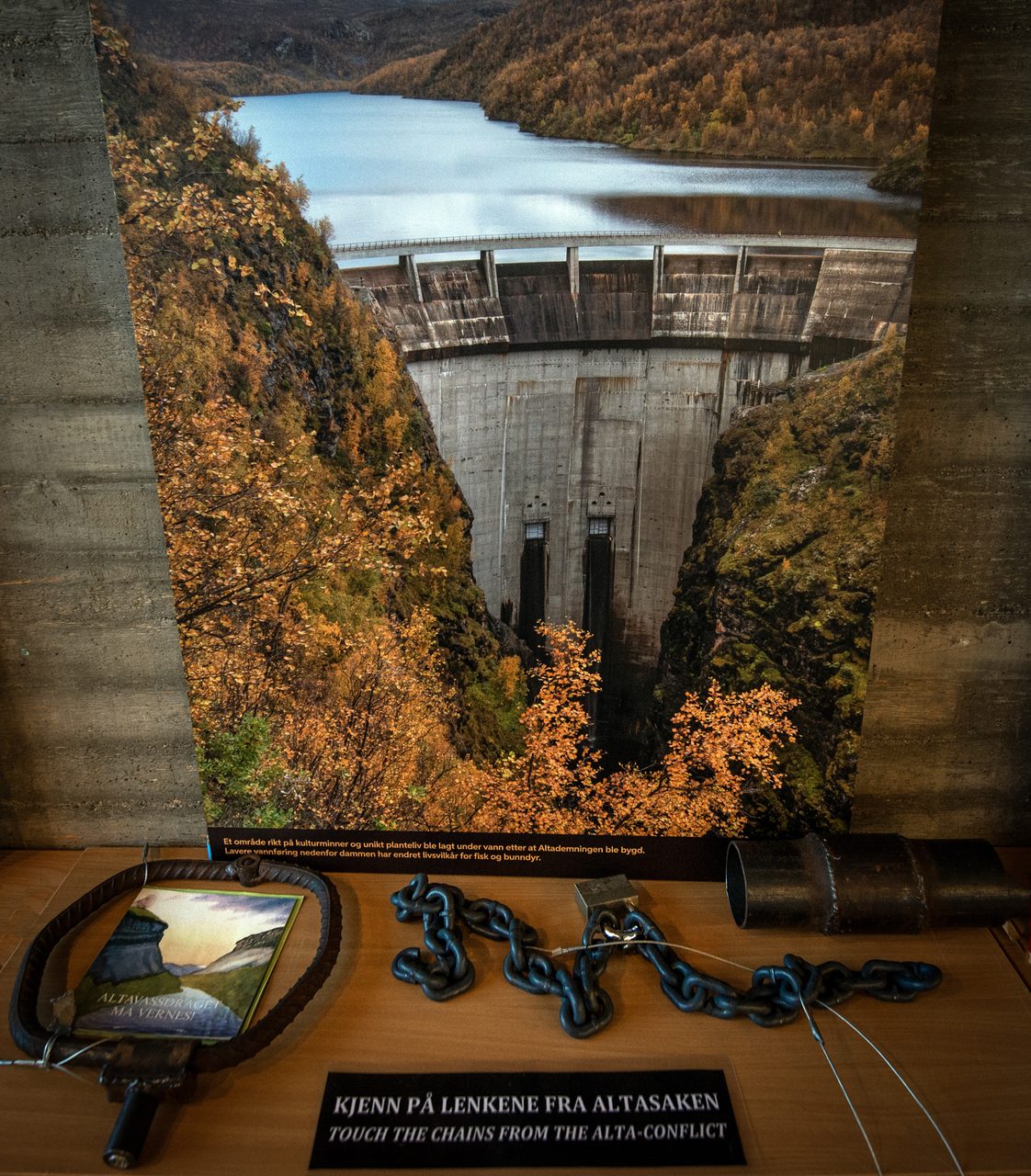
Alta dam and the chains used by protesters under the conflict. The photo is taken from an exhibition held in Kautokeino in Sep 2020.
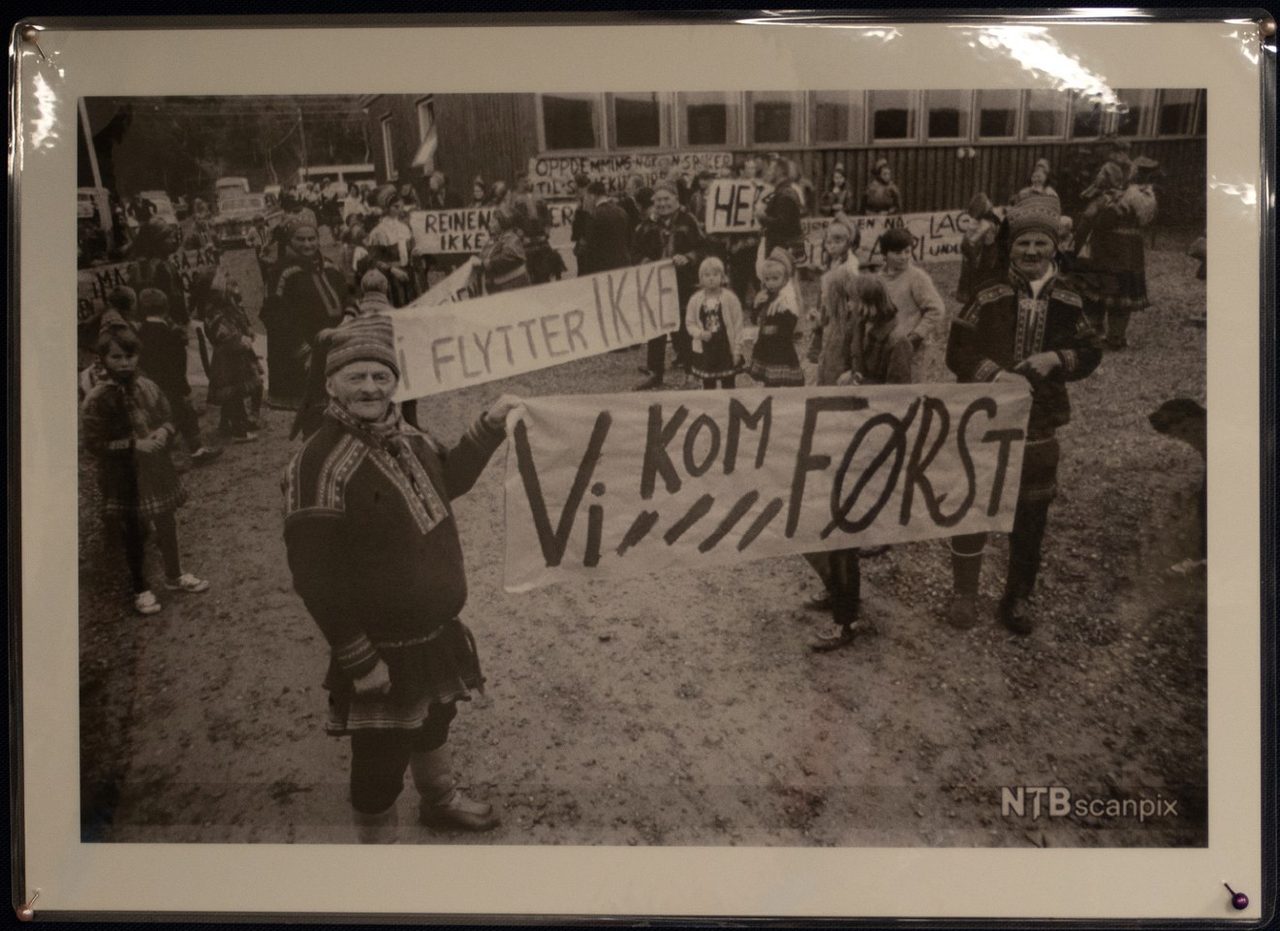
A big part of the population of Sámi village Maze demonstrated when a committe of Norwegian parlimant visited the village during Alta conflict: "We came first, we don't move" they said. The photo is taken from an exhibition held in Kautokeino in Sep 2020.
Finmark area has been also appropriated for mining for a long time. At the same time that Alta conflict was going on in 70s, Folldal Verk started constructing a copper mine, and built a restoration plant by Repparfjord. It is the same fjord that the new copper mine is planned to dump its waste. The old and the planned mine are within a reindeer herding district where some Sámi families have reindeer herding for many generations.
Production began in 1972, mostly in open pits, and stopped at 1978, because the global copper price reduced and the mining went bankrupt. The mining has done documented damage to the fjord life that has taken decades to repair
(acc. Gull, gråstein og grums by Svein Lund).
The traffic for the transportation in the mine was affecting the reindeer migration and grazing
The down section of the abandoned copper mine is still used for crushed stone mining

Ellos Vuotna!
A new copper mine is on its way to Repparfjord
In 2019, Nussir ASA company received permission to construct a new copper mine by Repparfjord. The license includes permission to dump the mining waste into the fjord which will affect the life in the fjord. The surrounding area is also used by Sámi reindeer herders as their pasture. Nussir ASA is marketing the copper as an essential metal for green transformation technologies. So the reindeer herders and some members of the Sámi Parliament are opposing the project as an example of Green Colonialism. Lots of environmental activists are also in solidarity with reindeer herders, fishermen and the locals.
In summer 2021 when Nussir company announced their plan to start the construction, Natur og Ungdom (Nature and Youth), the largest environmental youth organization in Norway, facilitated a protest camp by Repparfjord, with the help of local environmental and Sámi activists. The slogan of the protest is "Ellos Vuotna" in Sámi or "La Fjord Leve" in Norwegian which means "Let the Fjord Live"! Thousands of people from all over the country have signed for civil disobedient action to stop the project.
A big banner mounted by Natur og Ungdom near the protest camp:
No mining waste in the Norwegian fjords
The protest camp is set on a field lent by a local family in an area called Markoppsynet. The activists have access to the water and electricity of two neighboring families.
Welcome to the camp at Markoppsynet


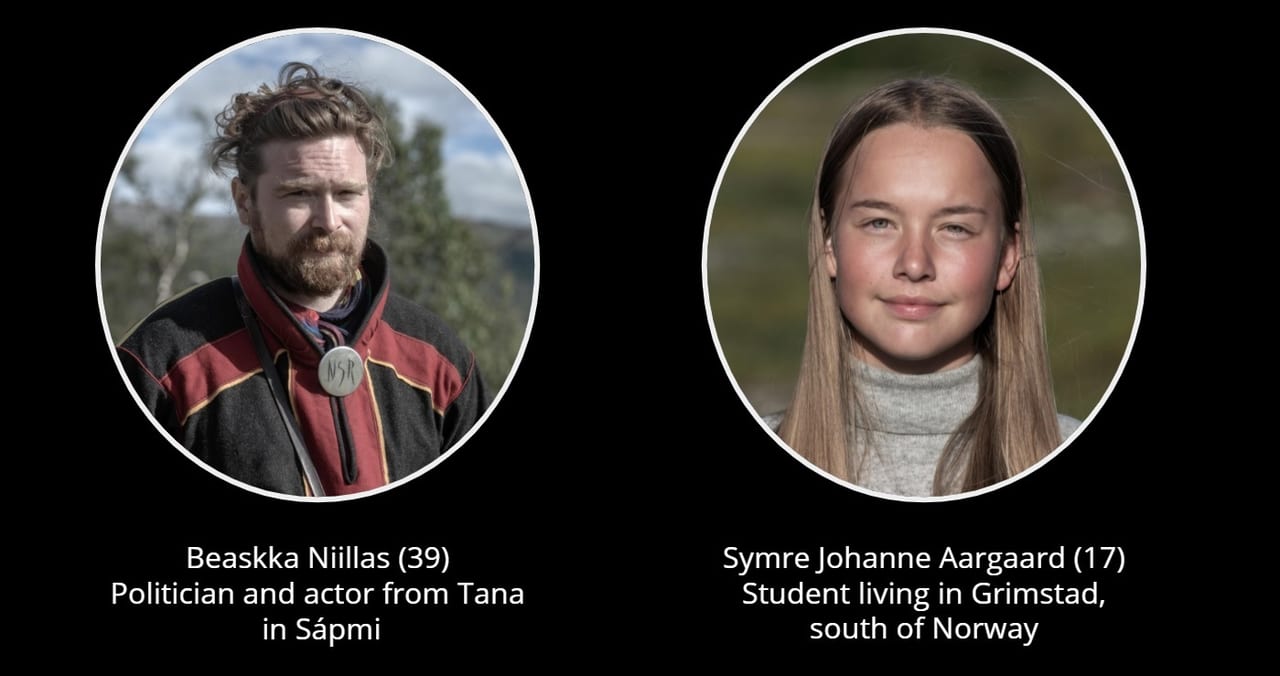
Activists and supporters with different ages and occputations, from different places, have stayed in the camp and participated in different activities. From the end of June until September, 2000 people have visited and 300 have camped there.
Activists staying in the camp meet locals and hear their struggles and learn their traditions and lifestyle. The camp is an arena for debates between advocates and critics of the mining. It is a place for concerts, arts, shared activities and experiencing a community life. Many of the activists are coming from cities, living an atomized urban lifestyle. Living even temporary in this community with voluntary non-profit exchanges gives a taste of how an alternative life in a direct connection to the land would look like: a community where collaboration before competition, sharing before profit, common goal before individualism, learning from other cultures instead of dominating them, and nurturing of ecosystem instead of appropriating it are the core values.
The community life in the camp
The camp life is coordinated in a flat structure, where people take responsibilities on a daily basis in the morning general meetings.
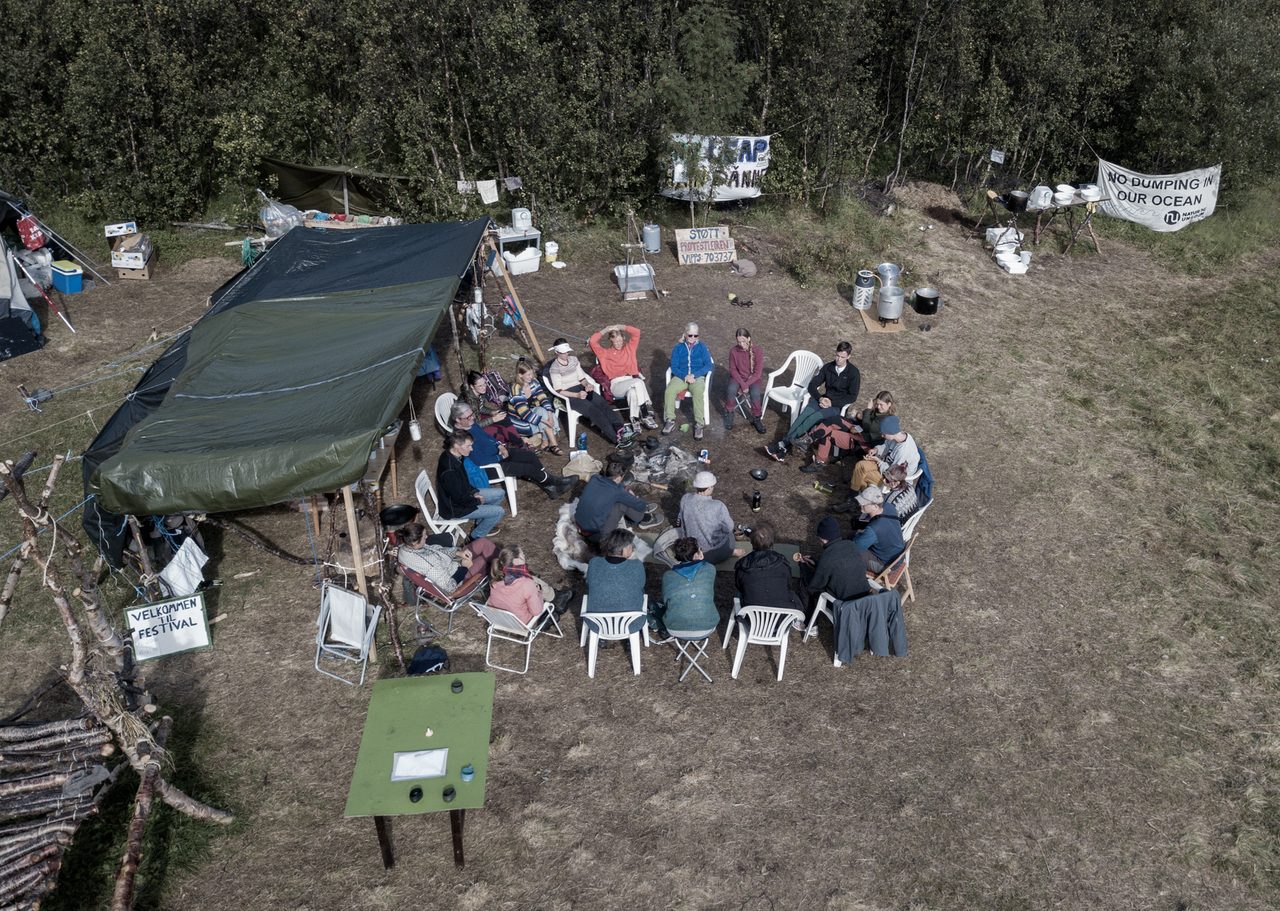

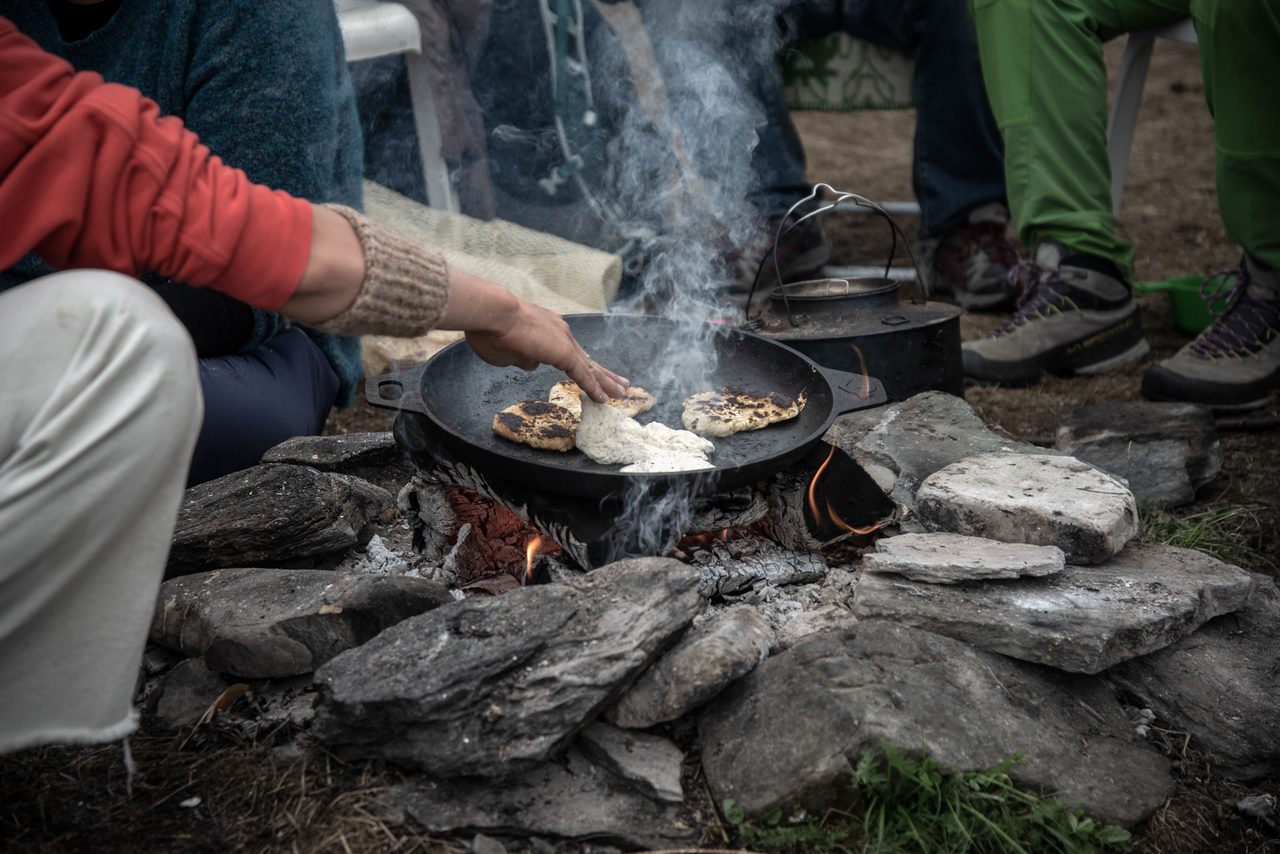
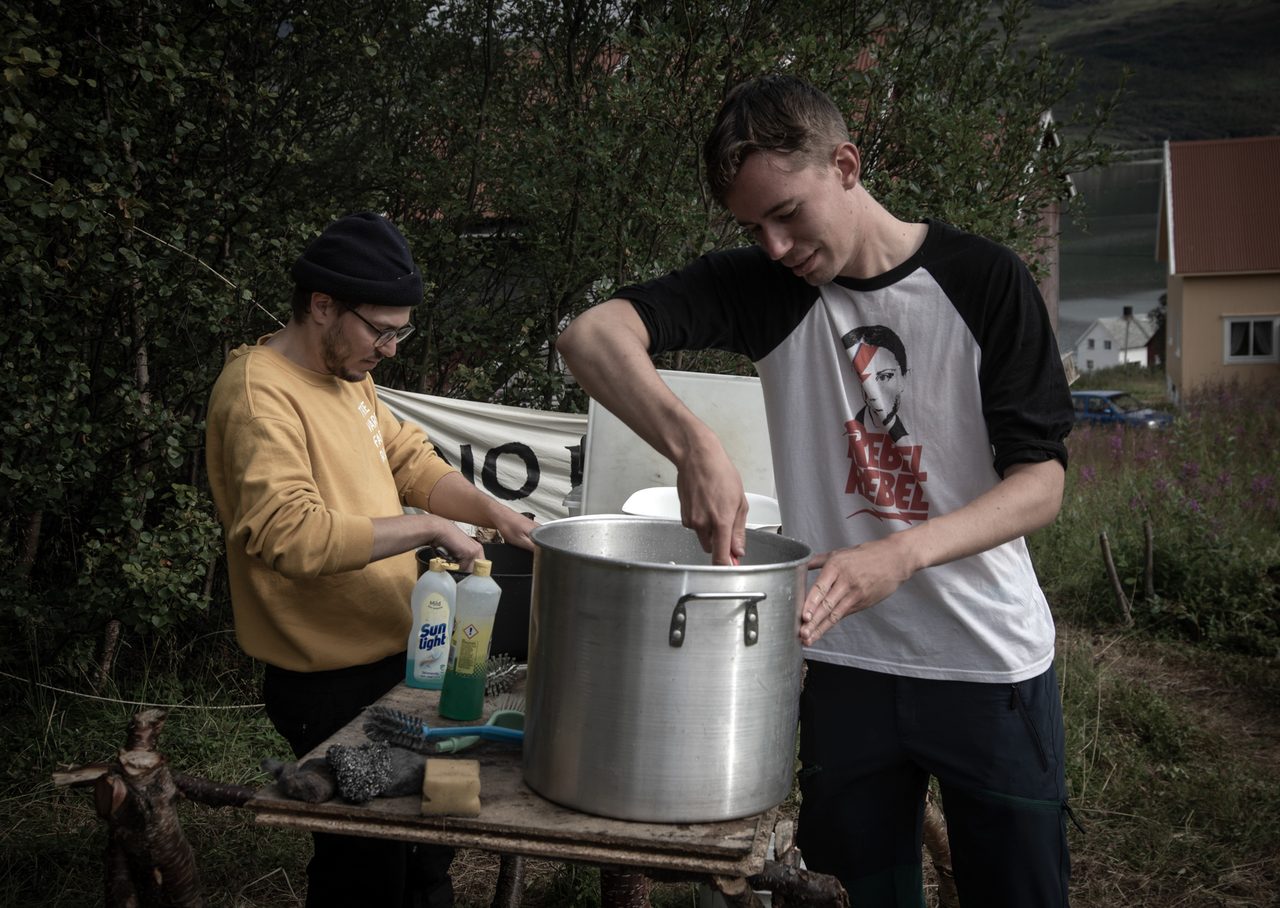
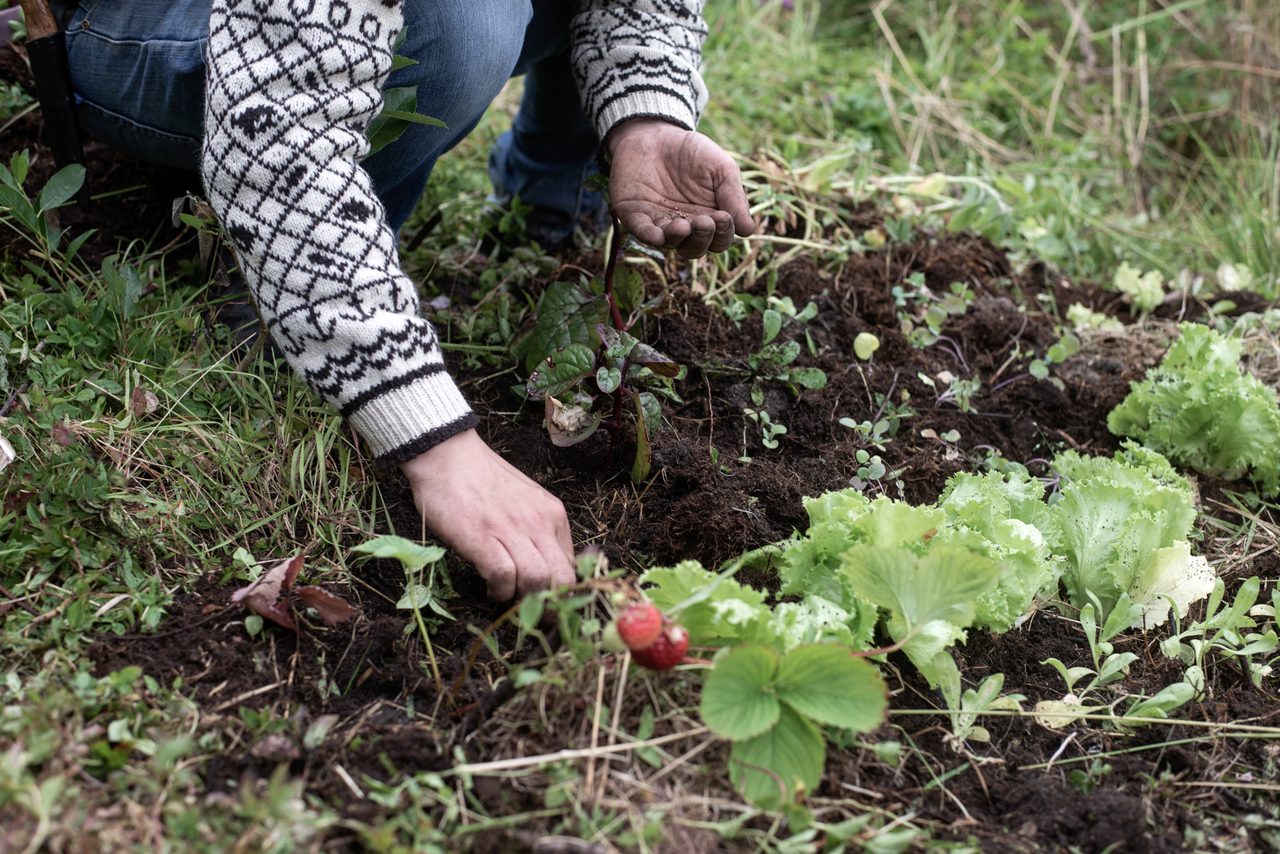
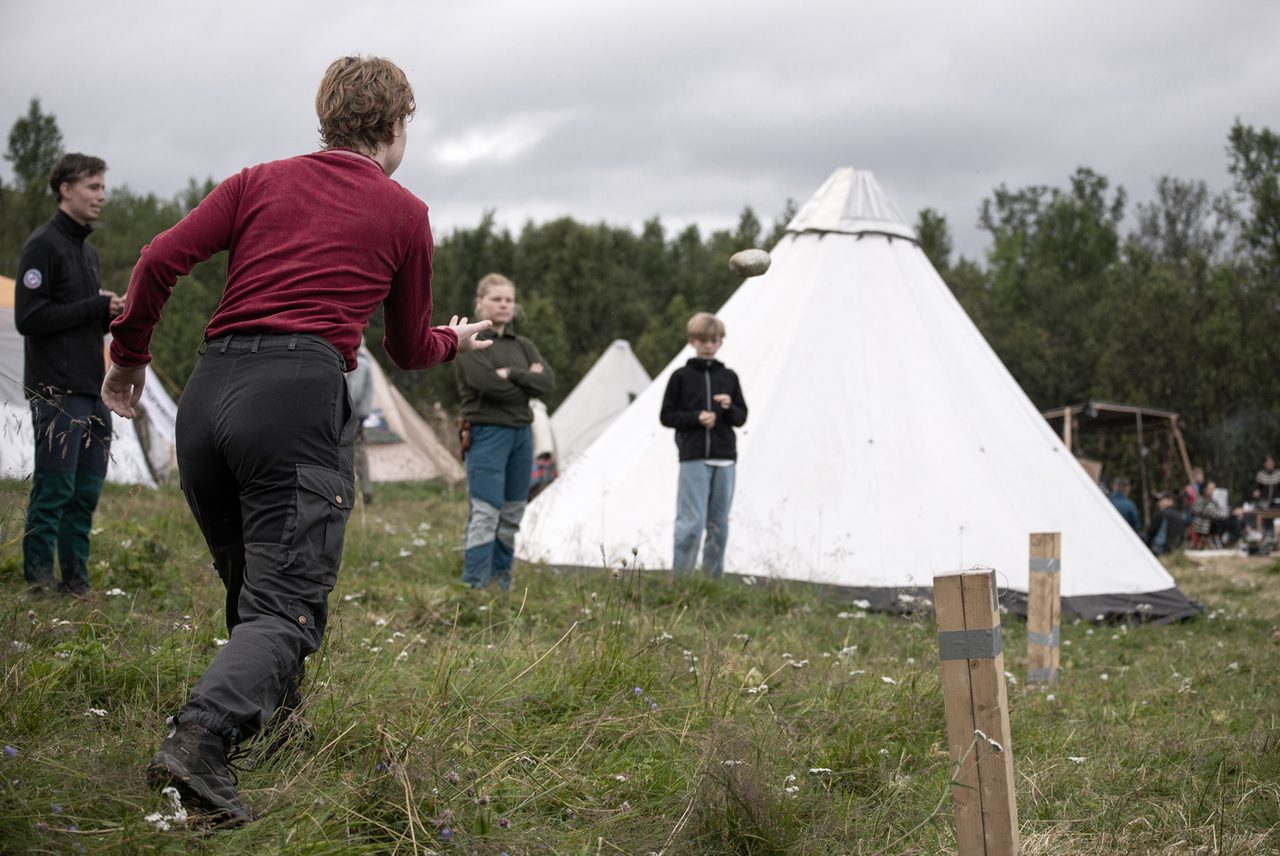
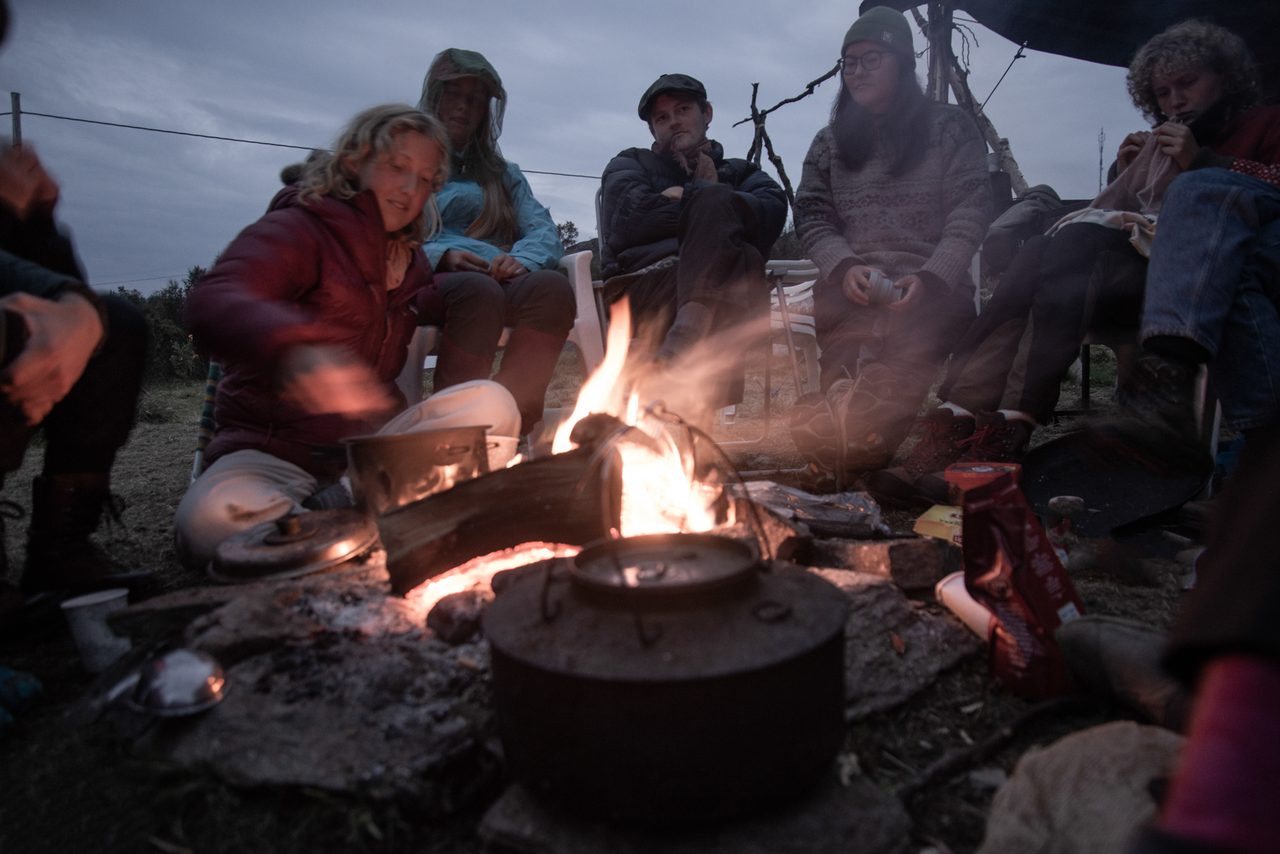
The camp arranged a music festival for four nights in August. Each night two bands were performing, including well know Sámi musicians Mari Boine and Ella Marie Isaksen. Many local people were attending the festival. The performance of Mari Boine, attracted more than 100 people.
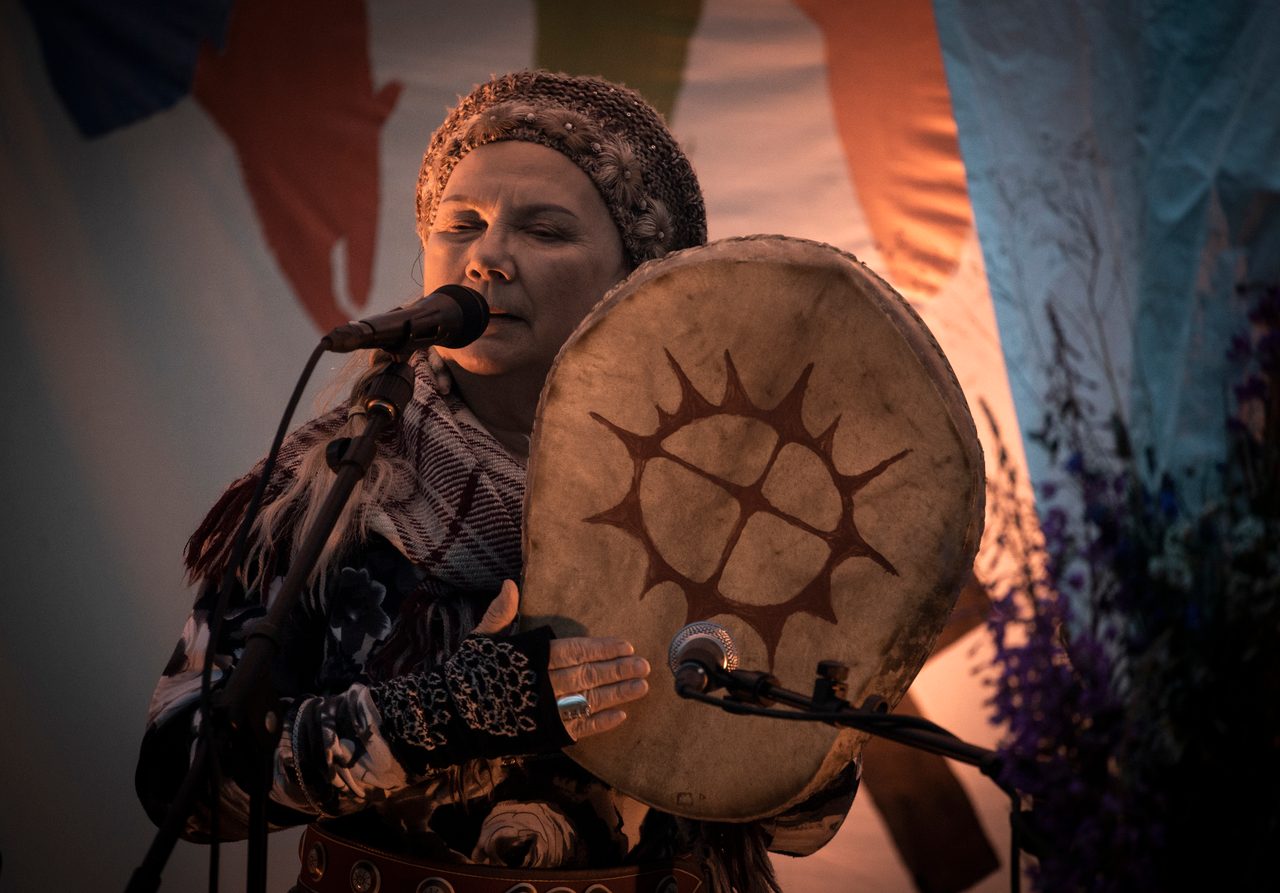
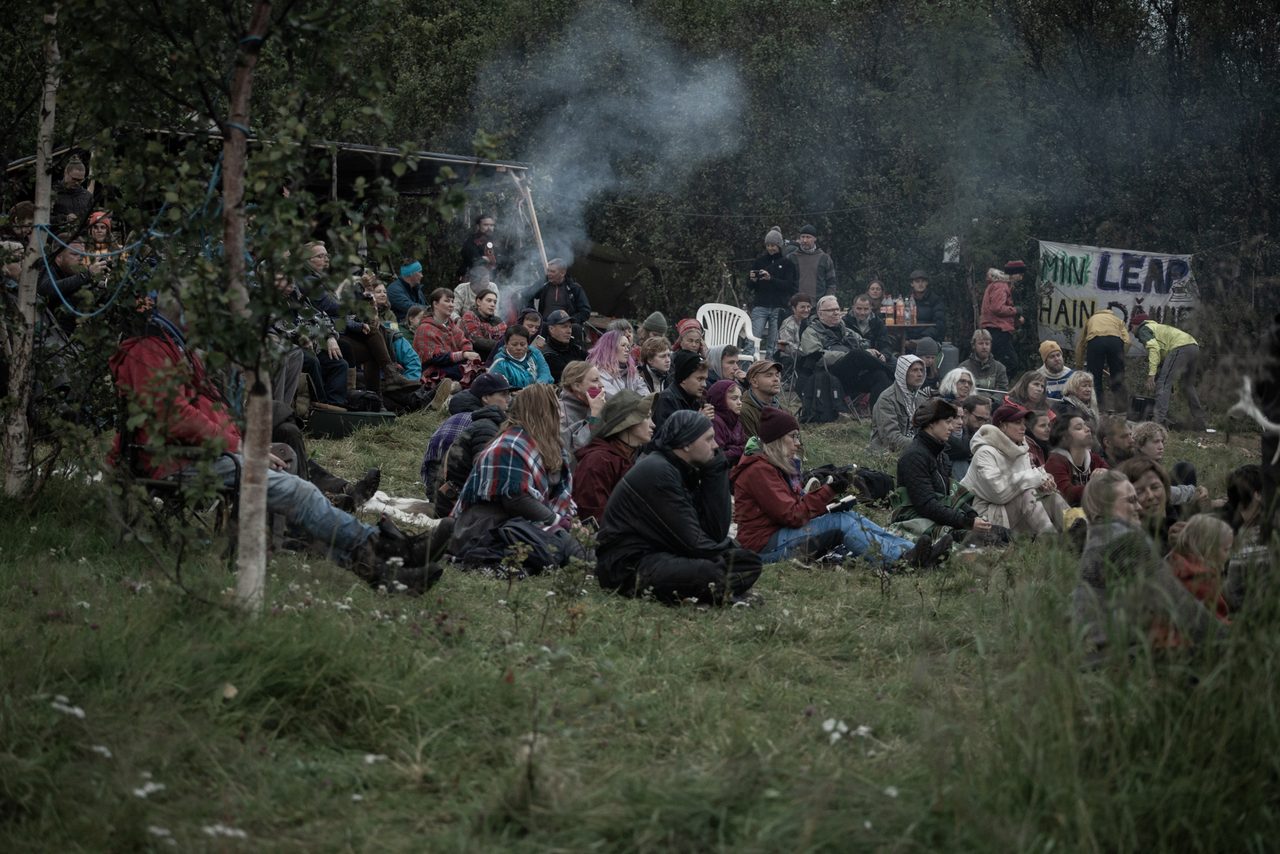
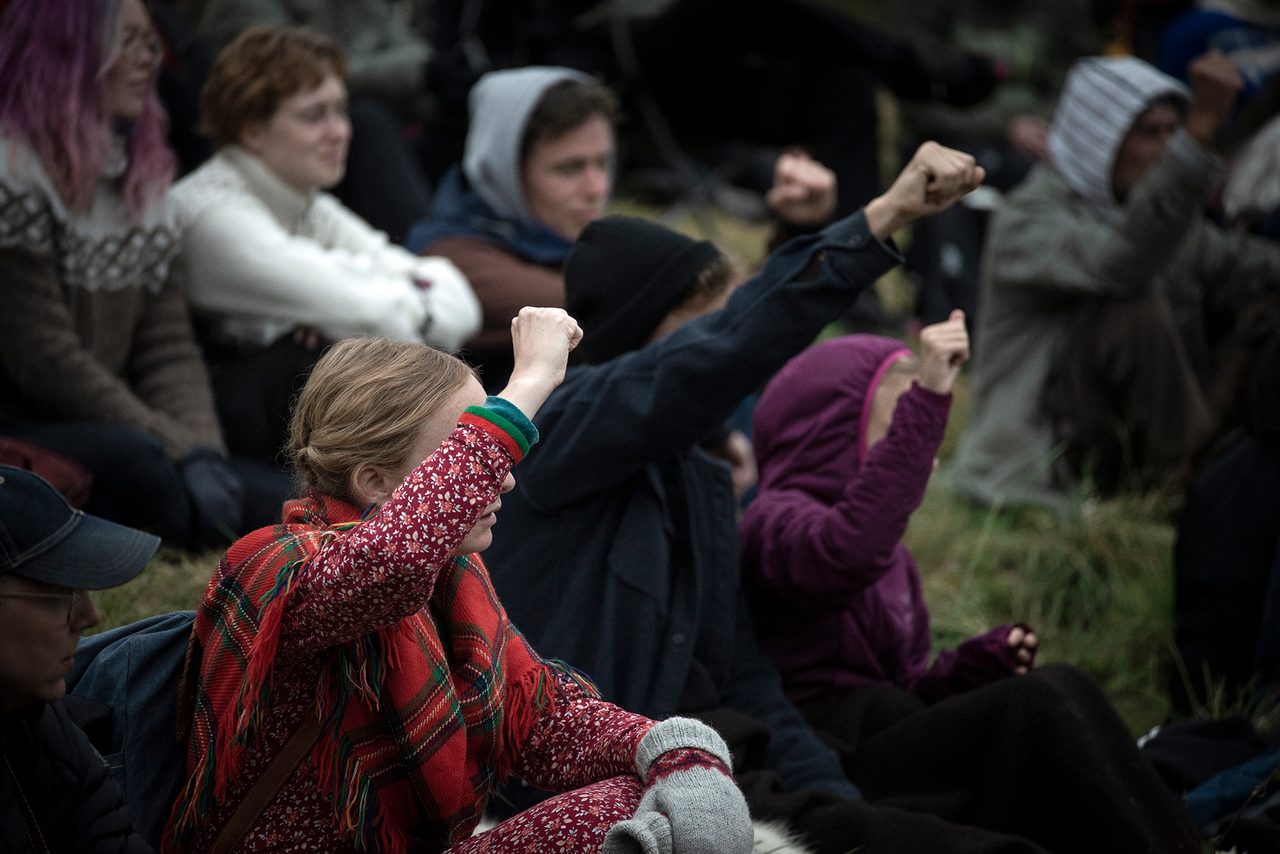
Fjordfest: The music festival
Many of Mari Boine’s songs are against discrimination and hate. “I became very angry to our repression, to the fact that we were told that there was something wrong with our language and our culture. And it resulted in a sort of a volcano, in an explosion of songs that just came to me.” She told in an interview about her famous album Gula Gula back in 1989.
So far the activists have stopped the construction machines for three times in July and August. Nussir company did not report the civil disobedience to the police in these three times. But later they got in contact with the police and have warned that the next time the company will report immediately to the police, and police from Hammerfest will arrest the activists.
Civil disobedience
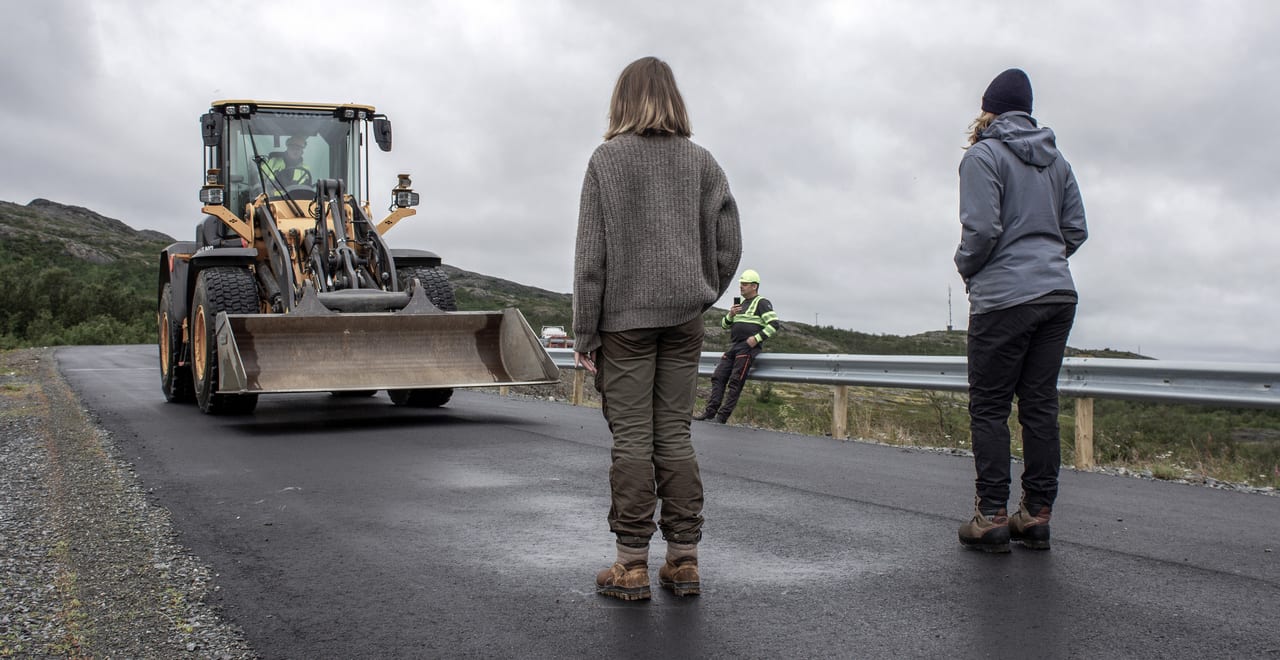
Photo: Jannicke Totland
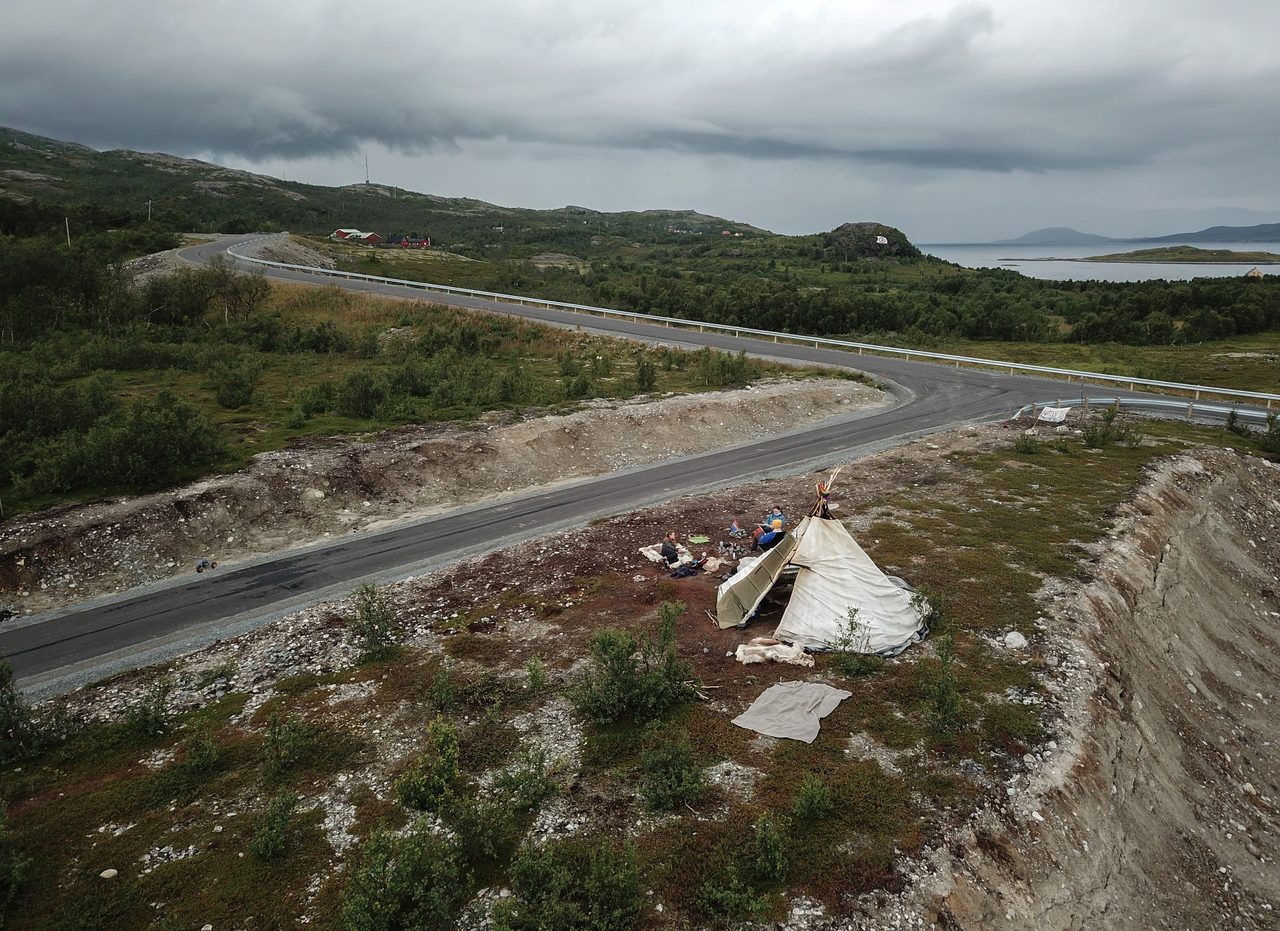
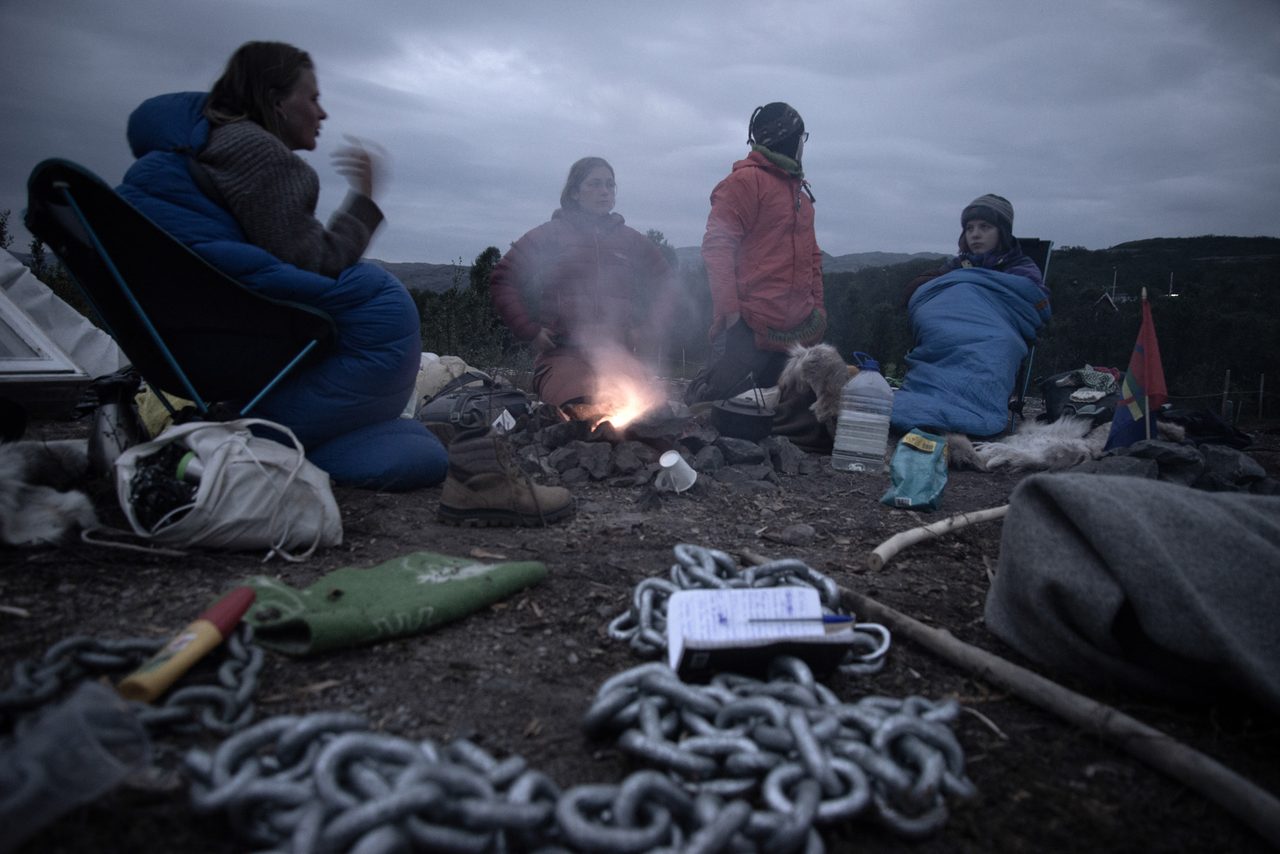
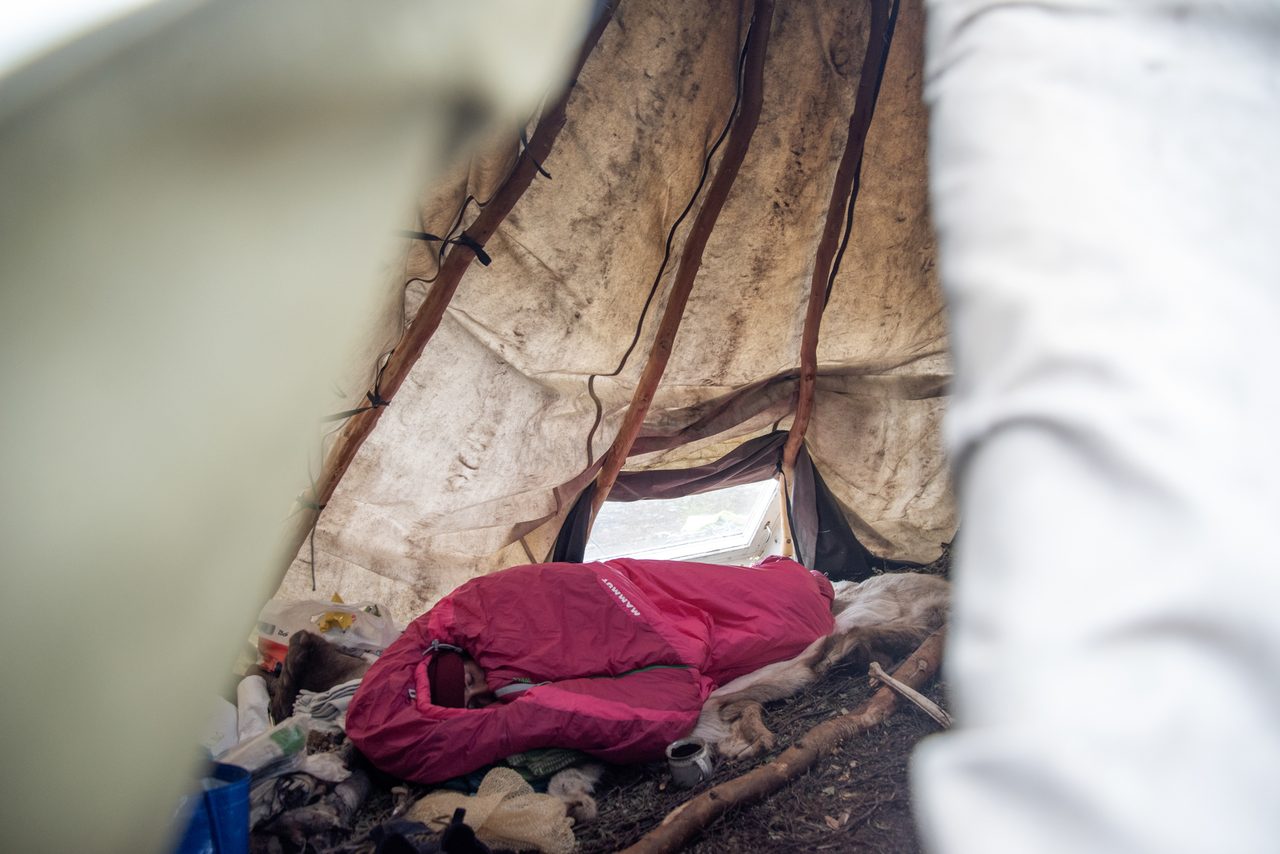
Some of the activists who have been in the camp, hold a crash course on civil disobedience for the newcomers who are eager to chain themselves and stop the construction machines, . They simulate and practice the situation when constuction machines come or police arrests the activists.
Activists, aware of the consequences of the civil disobedience, are still eager to stop the mining. So they are now waiting for the next time that the action begins and they confront the police and get arrested. They have set a guard lavvu near the entrance to the planned place for construction of mining. Always there are few activists staying in the guard 24/7, and they change the shift with others in the camp.
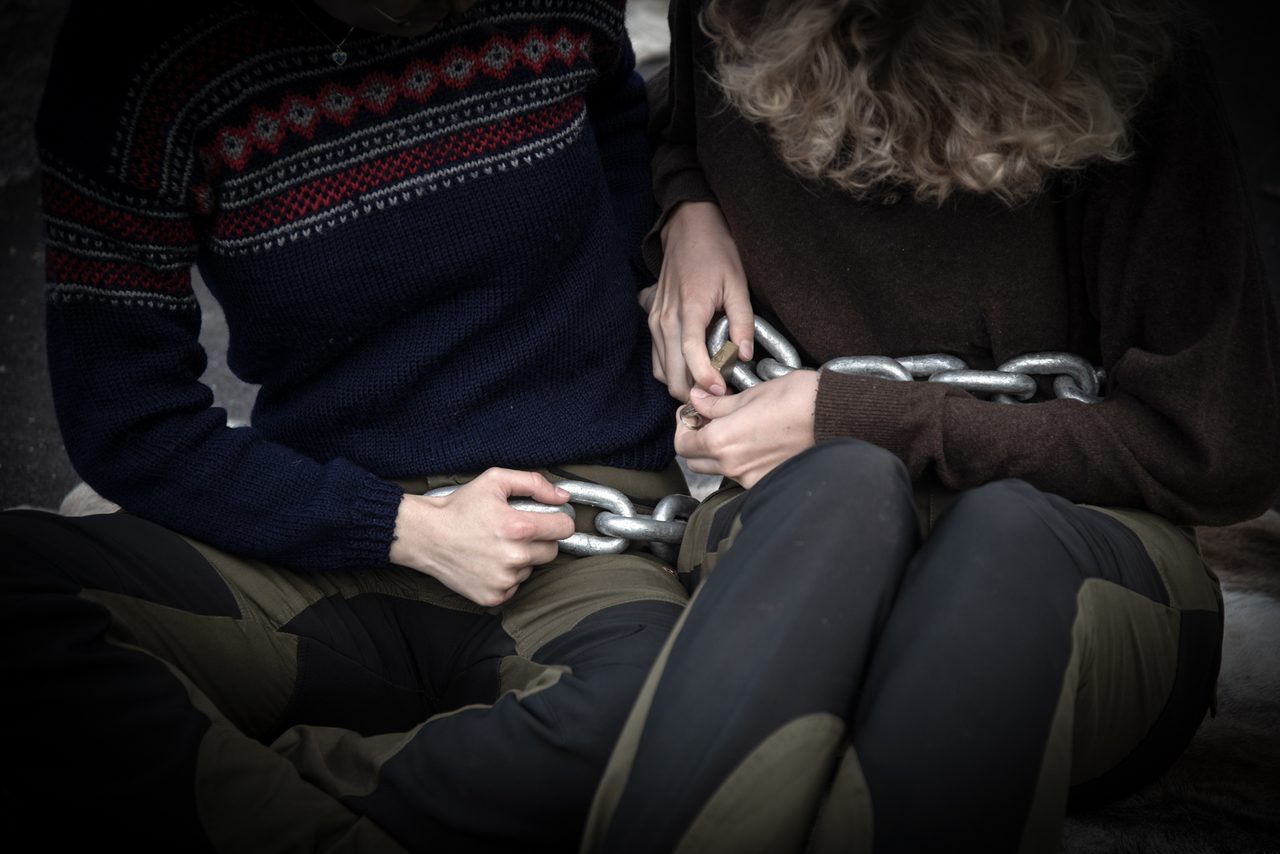
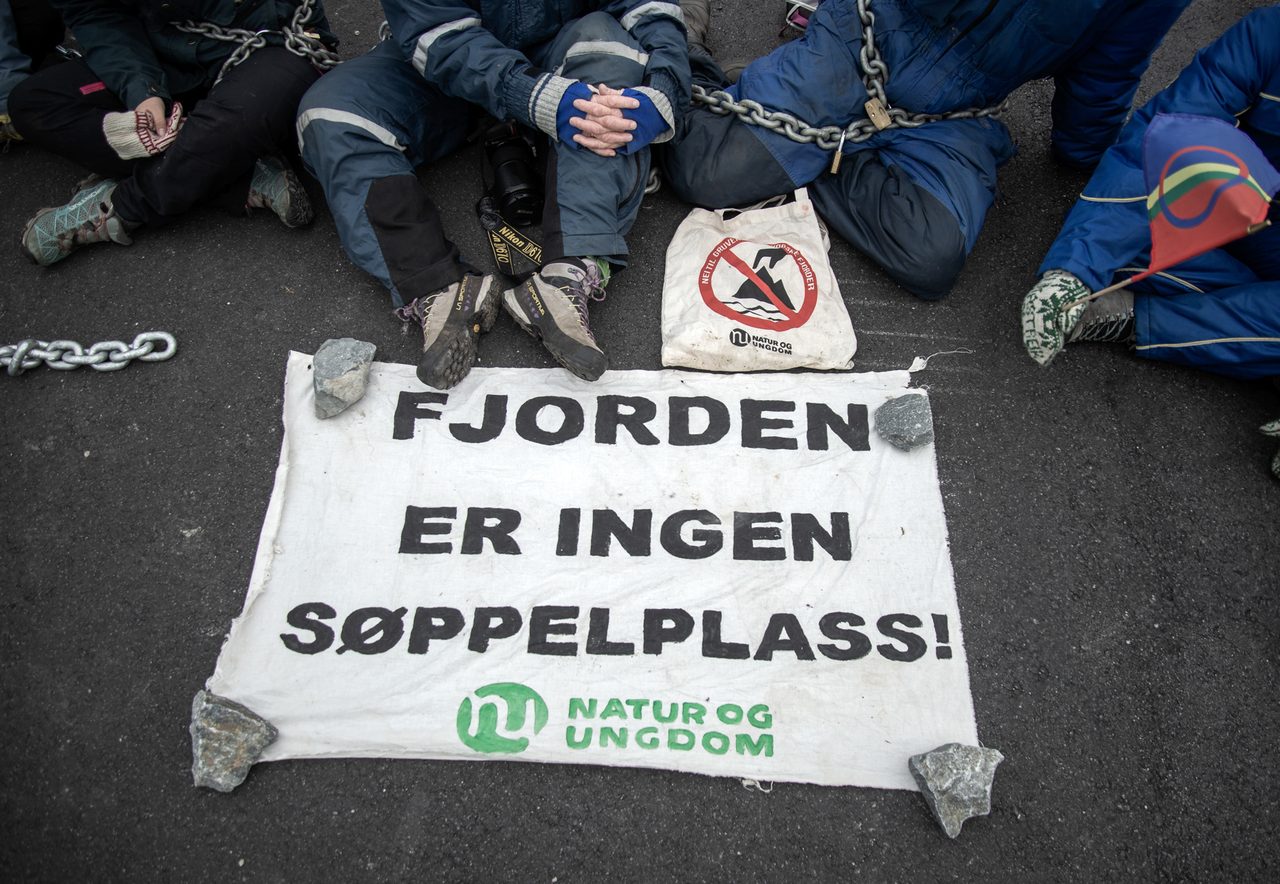
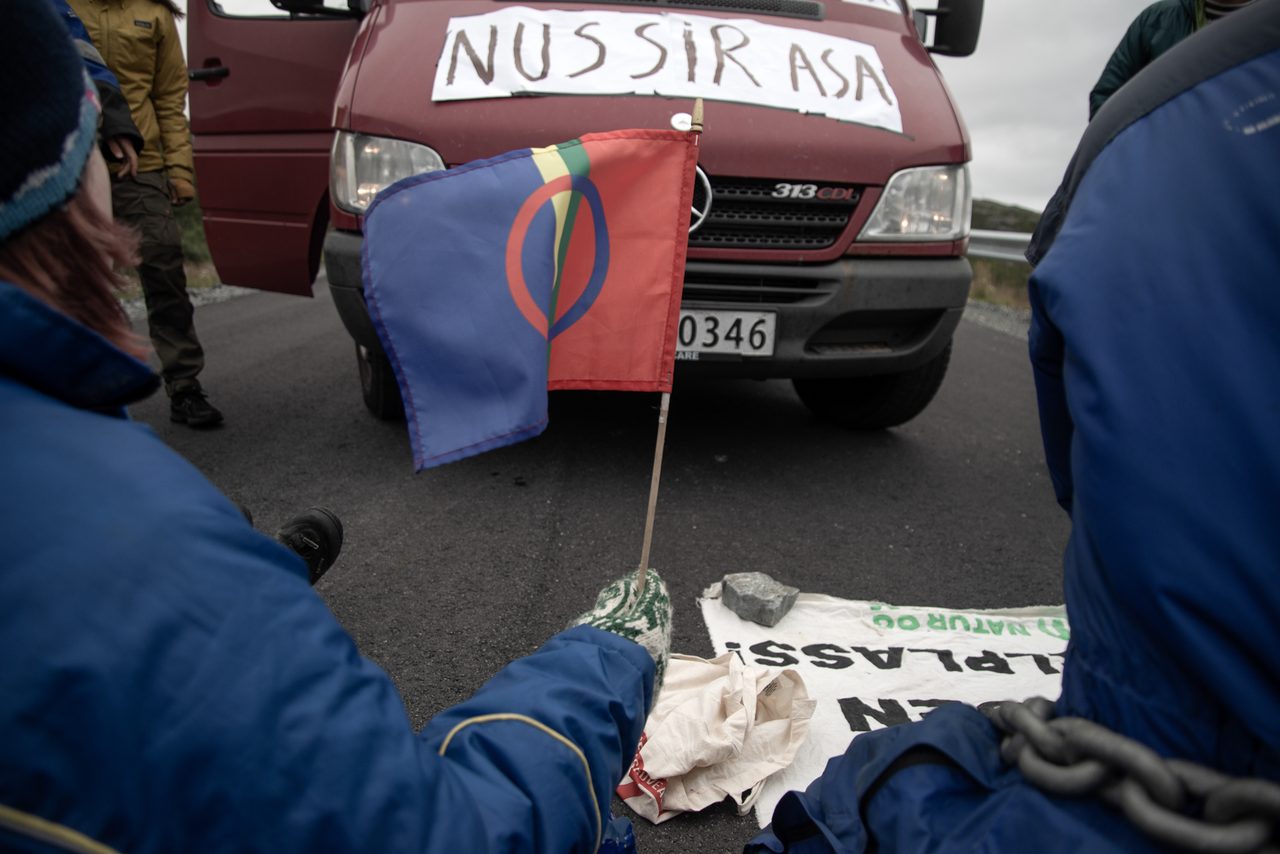
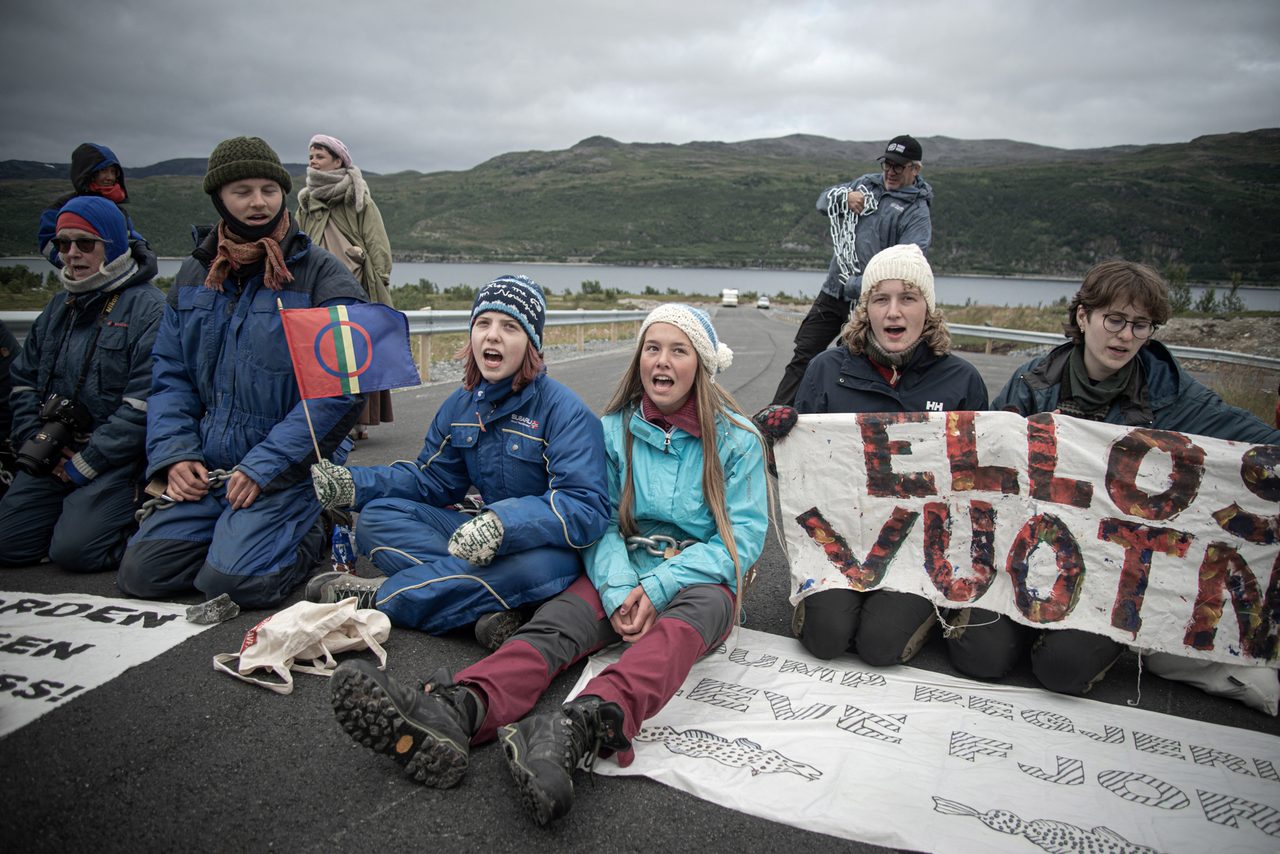
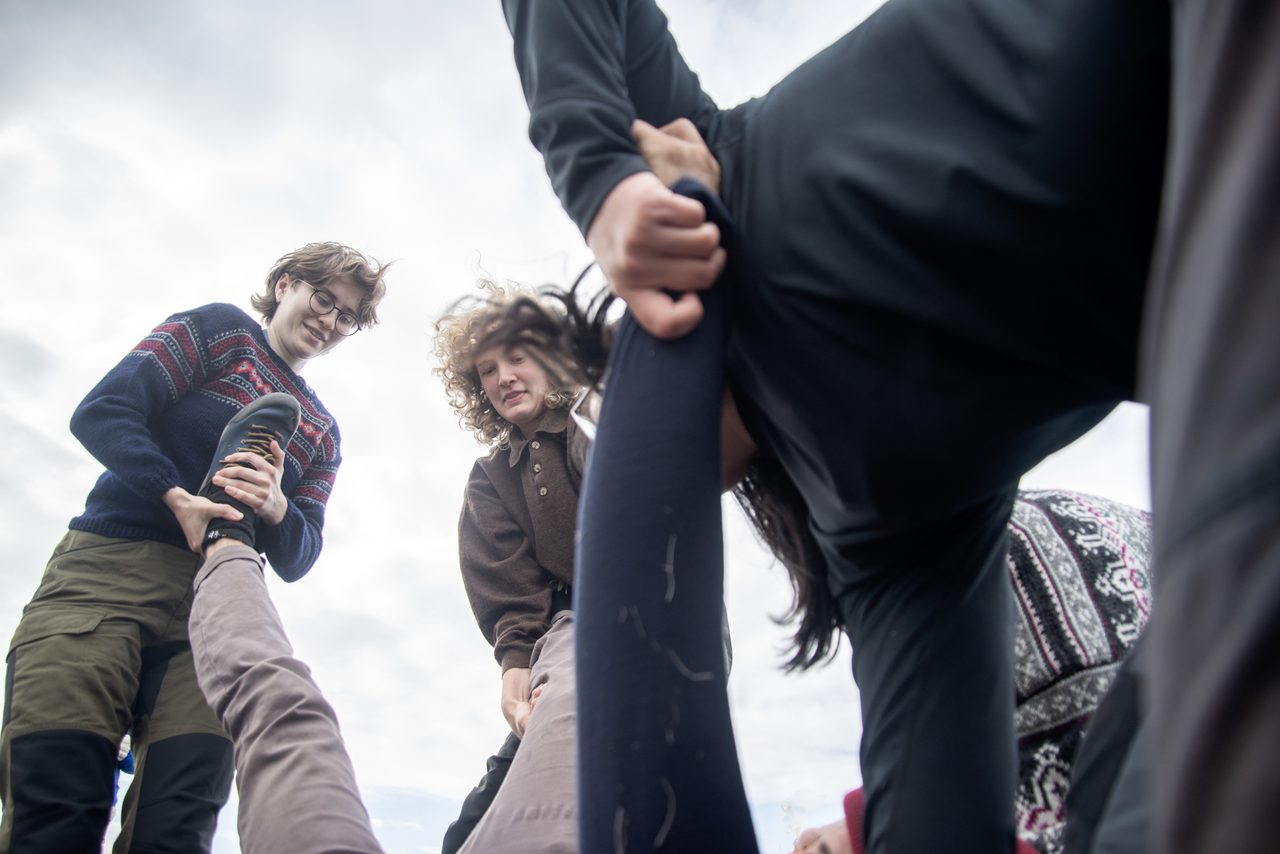
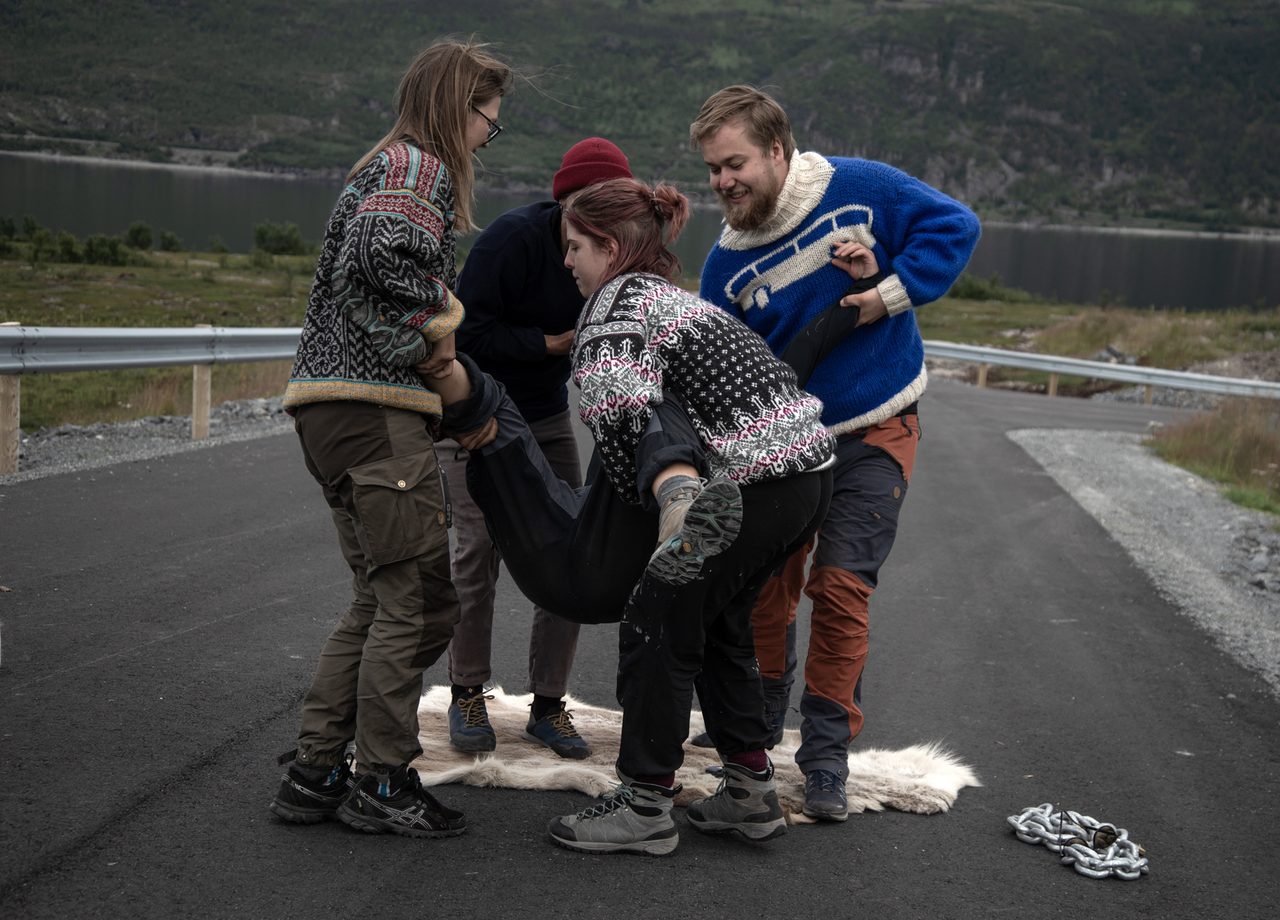
For many activists who are not from the area, this fight is an act upon solidarity. But for the locals who will be affected by the mining, especially the Sámi people, this is the continuation of a long journey started from their previous generations: people of Alta conflict and before. The journey is a fight for decolonization of the arctic, its ecosystem and its culture, and nurturing of different relationships among people, lands, and more-than-human relatives.
Will the local, Sámi and environmental activists be able to save Repparfjord and its surrounding life?